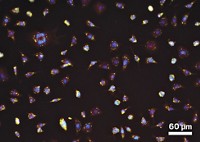Advertisement
Grab your lab coat. Let's get started
Welcome!
Welcome!
Create an account below to get 6 C&EN articles per month, receive newsletters and more - all free.
It seems this is your first time logging in online. Please enter the following information to continue.
As an ACS member you automatically get access to this site. All we need is few more details to create your reading experience.
Not you? Sign in with a different account.
Not you? Sign in with a different account.
ERROR 1
ERROR 1
ERROR 2
ERROR 2
ERROR 2
ERROR 2
ERROR 2
Password and Confirm password must match.
If you have an ACS member number, please enter it here so we can link this account to your membership. (optional)
ERROR 2
ACS values your privacy. By submitting your information, you are gaining access to C&EN and subscribing to our weekly newsletter. We use the information you provide to make your reading experience better, and we will never sell your data to third party members.
Biological Chemistry
Rethinking Amyloid
May 31, 2010
| A version of this story appeared in
Volume 88, Issue 22
We read with interest Lisa Jarvis’ article regarding the current state of drug development for Alzheimer’s disease (AD) therapy (C&EN, April 5, page 12). As the article correctly states, there is overwhelming evidence that excessive production or abnormal function of proteins such as amyloid-β (Aβ) and tau are detrimental to brain function. Unfortunately, this has resulted in a fixation on the potential toxicity of these singular proteins and a relative neglect of the study of their normal function in the context of aging.
It is unlikely that the enzymatic production of Aβ is accidental; rather, it is highly regulated and is necessary for normal brain activity. Indeed, a growing number of reports—in addition to the one cited in the article—support an endogenous role for Aβ in brain function. Consequently, the excess of amyloid observed in AD is likely a result of normal mechanisms that are occurring out of equilibrium rather than being the cause of a specific disease process.
This raises the question as to whether a reduction in amyloid would prove beneficial, given that the causes of its excessive production remain in place and are probably indicative of more multifaceted disturbances that remain untreated. Furthermore, given the multifactorial nature of neurological diseases such as AD, the brain probably receives a variety of insults that have negative consequences on function independent of amyloid toxicity or, for that matter, any singular protein.
In addition, endogenous roles for Aβ strongly suggest that any therapy intended to lower amyloid burden would need to be fine-tuned to a patient’s specific condition. Genetic variability and differing clinical courses in individual patients make this an enormous challenge. Given these technical and conceptual difficulties, targeting amyloid is not a particularly cost-effective approach to treating AD.
We are not advocating a halt in research; however, to commit the majority of our resources to a few specific proteins that we do not fully understand seems imprudent. Broadening our research with the goal of gaining a fundamental understanding of the aging brain would be a wise first step. Equally important will be shaping an integrative public-health approach that protects against the many insults to the human brain over a lifetime.
Although perhaps not as profitable as drug development, strategies that reduce vascular risk factors, minimize oxidative stress, guard against traumatic brain injuries, promote social engagement and lifelong learning, reduce exposure to neurotoxins, and other commonsense actions should be an explicit component of the fight against AD.
Simon D’Alton
Jacksonville, Fla.
Daniel George
Hershey, Pa.



Join the conversation
Contact the reporter
Submit a Letter to the Editor for publication
Engage with us on Twitter